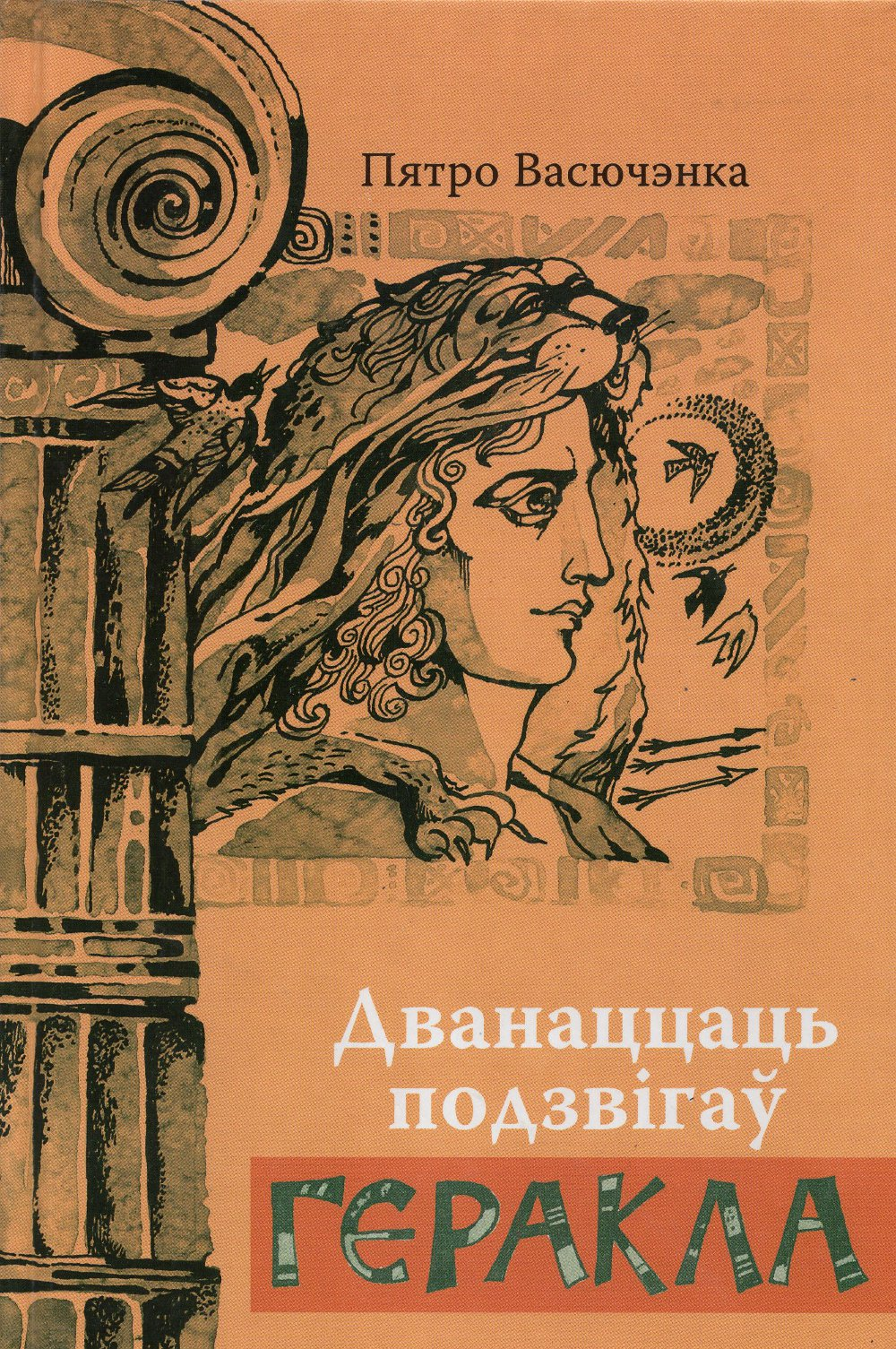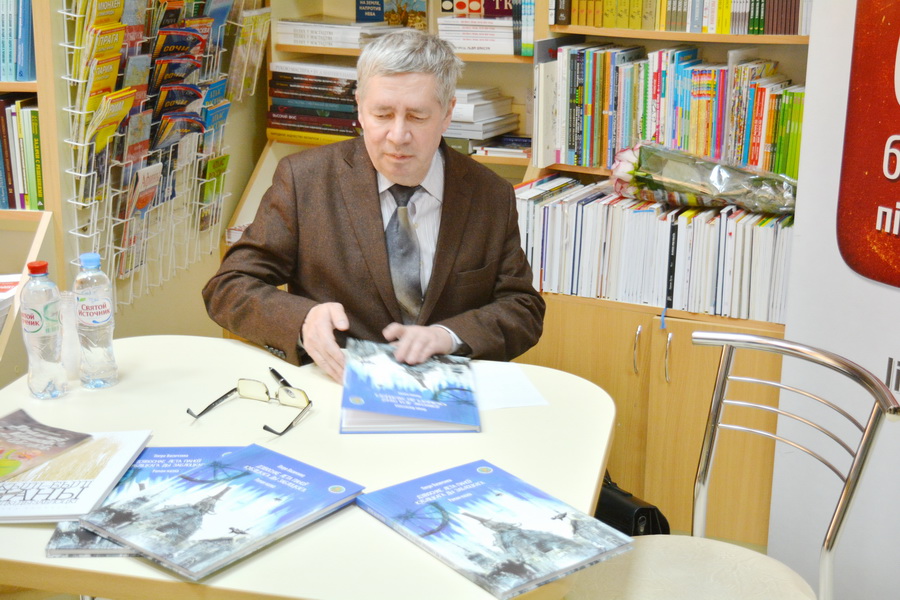Title of the work
Country of the First Edition
Country/countries of popularity
Original Language
First Edition Date
First Edition Details
Piatro Vasiuchėnka [Пятро Васючэнка], Дванаццаць подзвігаў Геракла: раман-бурлеск [The Twelve Labours of Heracles: a burlesque novel (Dvanatstsats' podzvigaŭ Herakla: raman-burlesk)], ill. Halina Khinka-Ianushkevich [Галіна Хінка-Янушкевіч]. Minsk: Звязда [Zviazda], 2013, 152 pр.
ISBN
Genre
Novels
Target Audience
Young adults (11–18 year old children)
Cover

Cover retrieved from kamunikat.org (accessed: April 6, 2022). Copyright © 2013 by Piatro Vasiuchėnka [Пятро Васючэнка], illustrations by Halina Khinka-Ianushkevich [Галіна Хінка-Янушкевіч], graphic design by "Zviazda" publishing house («Выдавецкі дом «Звязда»). Copyright © 2000-2022 by Kamunikat.org.
Author of the Entry:
Maria Pushkina, National Academic Janka Kupała Theatre, maryiapushkina@gmail.com
Peer-reviewer of the Entry:
Elżbieta Olechowska, University of Warsaw, elzbieta.olechowska@gmail.com
Lisa Maurice, Bar-Ilan University, lisa.maurice@biu.ac.il

Piatro Vasiuchenka. Courtesy of budzma.by.
Piatro Vasiuchenka
, b. 1959
(Author)
Piatro Vasiuchenka (Пятро Васючэнка) is a Belarusian literary critic, prose writer, playwright, author of fantasy books and books for children. He was born in Polatsk, Belarus. In 1981 he graduated from the Faculty of Journalism, Belarusian State University. In 1983 he defended his thesis at the Institute of Literature, National Academy of Sciences of Belarus. He also worked for the Academy of Sciences in the past. Nowadays he is Head of Department of Belarusian Language and Literature at Minsk State Linguistic University. He is a member of Belarusian Writers’ Union. He has written many monographs and studied Belarusian literature in a worldwide context. His plays have been staged in many Belarusian theaters. His literary works were translated into English, Bulgarian, German, Polish, Russian, Slovak and Czech.
Bio prepared by Maria Pushkina, National Academic Janka Kupała Theatre, maryiapushkina@gmail.com
Summary
The Belarusian author reveals Heracles as a teenager in his impulsive, naive and maximalist nature, yet endowed with extraordinary physical strength. His labours are a journey of self-discovery as his understanding of virtue and justice develop. The novel is divided into chapters corresponding to the Labours of Heracles and has additional prologue (Tripod of Apollo) and epilogue (Return to Delphi). The plot begins with the rebirth of Alcides (Heracles’s original name given him by his mother Alcmene after Alkaios, the father of Amphitryon, the husband of Alcmene), who asks Apollo’s pythia to reveal the future. Pythia gives Alcides a new name (Heracles), orders him to serve Eurystheus performing twelve labours to break free from his power. Heracles performs the labours in the traditional order:
- The Nemean Lion;
- The Lernaean Hydra;
- The Golden Hind of Artemis;
- The Erymanthian Boar;
- The Augean stables;
- The Stymphalian Birds;
- The Cretan Bull;
- The Mares of Diomedes;
- The girdle of Hippolyta, Queen of the Amazons;
- The monster Geryon;
- The apples of the Hesperides;
- Cerberus.
The presentation of each episode is schematic, but very precise in details. There are frequent short comments that explain the deeds of gods and retell less known mythological stories. Some minor heroes act along with Heracles, namely Heracles’ nephew Iolaus and two shepherds (one old and one young) who possess folk wisdom and have stereotypical characters. They want to stay away of the gods and their deeds. The journey of Heracles ends at the place where it began, in Delphi. Pythia tells Heracles that in order to live forever, he will have to die. Heracles chooses earthly life and tells Hera that he will join the Olympian gods only if she wants it.
Analysis
This work can be considered as a classic retelling of the mythological plotfor a young audience. In the foreword the author explains his attraction to antiquity as follows, "Greece was the cradle of the world civilization, and what we have today, we have thanks to that epoch, which is called antiquity." He compares ancient Greece with his homeland, the ancient Polatsk principality, from which the history of Belarusian statehood began and with which many images of Belarusian mythology are associated. It is interesting that the author compares his burlesque novel with famous poems Taras on Parnassus and Aeneid inside out, in an attempt to interact with these works of Belarusian literature that were able to speak with a note of irony and humor "about the past and about serious matters" ("And Olympus, Parnassus, Heracles – they’re all ours, Belarusian!"). Thus, the reception of antiquity by the Belarusian literature of the 19th century becomes an inspiration for the new Belarusian youth literature. The well-known ancient plot is barely transformed by the author, but the image of Heracles is shifted towards a realistic, as opposed tomythological,canon, which allows Heracles to be a simple man gifted with extreme strength. The hero finds himself in everyday reality. Moreover, he is looking for his personal human vocation, the meaning of his life. Heracles’s character at the beginning of the story is reminiscent of a teenager undergoing a rite of passage by accomplishing feats; as a result, he earns the right to choose instead of a place on Olympus. For Heracles, his journey is a process of maturation, which helps him reach the main truth: the world is ruled by Love, Mercy, and Grace. This formula combines the Belarusian folk wisdom and Christian motifs, which “must be passed on to the next generation”. It also could be read as a subtle reference to the famous Choice of Heracles, between virtue and vice. Mythological motifs in the novel are successfully combined with allusions to national classics (Piatro Vasiuchenka mentiones Taras on Parnassus and Aeneid Inside Out in the prologue), complemented with humor and irony. They also have a certain resonance with contemporary issues (like emancipation or terrorism). In addition to the important educational function (we have a complete guide to Heracles’ life), the novel clearly sets moral and axiological guidelines for the readers and encourages them to follow these guidelines.
Further Reading
Kislitsyna, Ganna [Кісліцына, Ганна], "Раман выхавання" як беларускі трэнд [Bildungsroman as a Belarusian trand (Raman vyhavannia iak belaruski trėnd)], available at bookster.by (accessed: June 12, 2018).
Siŭchykaŭ, Uladzimir [Cіўчыкаў, Уладзімір], “Трынаццаты чын. Водгук-бурлеск” [The Thirteenth Labour. A burlesque review (Trynatstsaty chyn. Vodhuk-burlesk)], Дзеяслоў [Dziejasloŭ] №2 (69) (2014): 316–322.
Addenda
Genre: Author classified the book as “a burlesque novel„ and mentioned in the foreword, that „it could be read as a “Bildungsroman“.
The book’s title written with the use of the Belarusian Latin script, łacinka (latsinka): Dvanaccać podzvihaŭ Herakła.


